|
Lincoln
|
1917
- present |
Country: |
 |
|
'THE IDEAL LINCOLN OWNER is a man of means who enjoys the Lincoln's economies to the full ... the Lincoln owner usually has both town and country homes, moving conveniently among them with his Lincoln ... the Lincoln owner considers the world his playground and his base of business operations. His Lincoln car carries him far, swiftly and luxuriously ... the ideal Lincoln owner has exceedingly high standards of taste. He enjoys the faultless upholstery, fittings, furnishings and finishing of his Lincoln car ... an owner does not have to be an engineer to appreciate his Lincoln, although such authorities throughout the world proclaim the Lincoln "as fine a motor car as it is possible to produce".'
Those are not our words - the staff at Unique Cars and Parts are not that clever - rather they come from the Lincoln marketing department, first appearing in 1930, at the height of the depression. Though the Lincoln had then been in production for only eight years, it enjoyed an immense prestige which was all the more remarkable for the fact that the company had been part of the Ford Motor Company since 1922, when the Model T was at its peak.
Henry Martyn Leland
But the man who had founded the Lincoln company and headed it through its first years of production was a very different personality from Henry Ford. The name of Henry Martyn Leland, born in 1843, had become synonymous with the highest standards of precision manufacture long before the dawn of the motor age. Leland, the youngest of the seven children of a teamster from Danville, Vermont, had begun work in the Springfield, Massachusetts, armoury, then moved to the Colt gun works at Hartford, Connecticut, and subsequently to the Brown & Sharpe company at Providence, Rhode Island, claimed to be the world's finest producers of micrometers and machine tools.
Here, Leland worked to tolerances as high as 1/270,000 inch, becoming so versed in the subject that he was appointed the company's 'super-salesman', capable of building, selling, and installing any of the firm's products and then instructcting the customer in its proper use. Next, Leland set up in business on his own, heading the Leland & Faulconer company, based in Detroit. Precision casting and gear-cutting was this company's forte, a field in which their supremacy was so marked that they could ask for - and get - prices three times higher than those of their rivals.
The Detroit Automobile Company
Among their successes was the development of the shaft-and-pinion transmission for the Columbia chainless bicycle. After the Oldsmobile factory was destroyed by fire in 1901, Ransom E. Olds ordered engines from Leland & Faulcolner, who were also supplying him with gears. Thanks to the precision of their manufacture, the Leland & Faulconer engines were more than 25 per cent more powerful than the Olds-built units, which developed 3 bhp. Not content with this, Leland showed how the Olds engine could be tuned to give 10.25 bhp. All this proved, apparently, too much for Mr Olds, who didn't fancy having to upgrade the rest of the engineering of his horseless buggy to match, but it was just what the Detroit Automobile Company, which had just been reformed, was looking for.
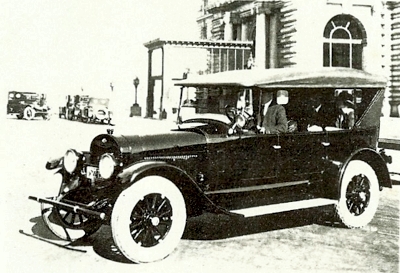 1921 Lincoln five-seat tourer, which was fitted with a 5.8 liter engine, and body by American Body Co.
1921 Lincoln five-seat tourer, which was fitted with a 5.8 liter engine, and body by American Body Co.
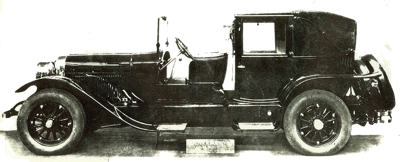 1925 Murphy-bodied Lincoln V8.
1925 Murphy-bodied Lincoln V8.
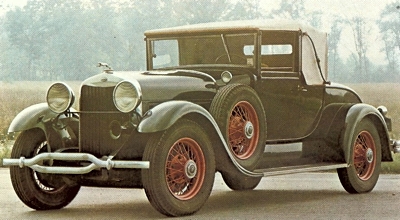 1929 Locke bodied Lincoln club roadster 151. The number referred to the body type, not the car model.
1929 Locke bodied Lincoln club roadster 151. The number referred to the body type, not the car model.
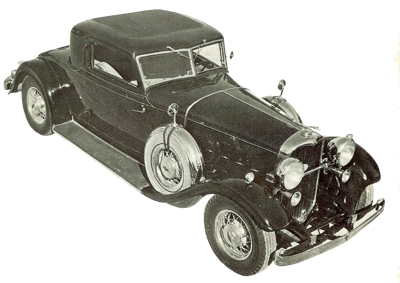 1932 Lincoln KB Roadster, which was fitted with a 7.2 liter V12 and body by Dietrich.
1932 Lincoln KB Roadster, which was fitted with a 7.2 liter V12 and body by Dietrich.
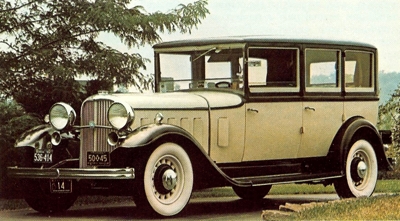 1932 Lincoln KB Roadster, with Rollstone coachwork.
1932 Lincoln KB Roadster, with Rollstone coachwork.
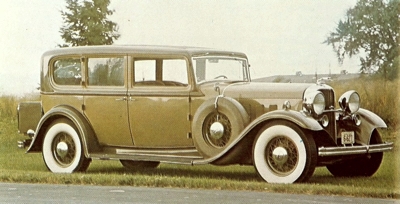 1932 Lincoln KB, with room for 7 passengers. This is one of only a handful to actually be fitted with Lincoln bodywork.
1932 Lincoln KB, with room for 7 passengers. This is one of only a handful to actually be fitted with Lincoln bodywork.
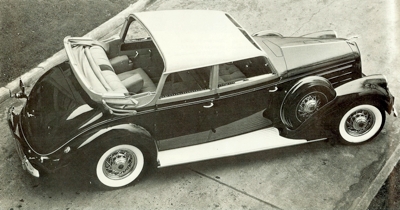 1934 Model K Lincoln, which replaced the KA and KB. It was fitted with a 6.8 liter engine, and the vehicle pictured has a Brunn touring cabriolet body.
1934 Model K Lincoln, which replaced the KA and KB. It was fitted with a 6.8 liter engine, and the vehicle pictured has a Brunn touring cabriolet body.
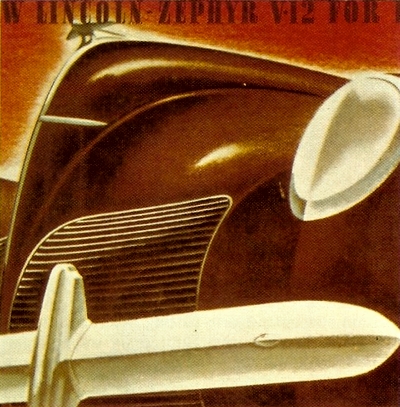 1938 Lincoln Zephyr V12 advertisement.
1938 Lincoln Zephyr V12 advertisement.
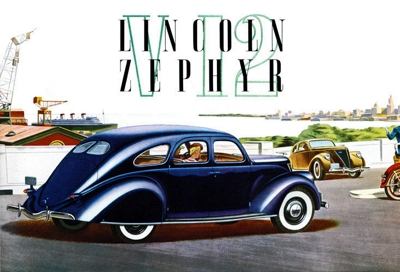 1936 Lincoln-Zephyr V-12.
1936 Lincoln-Zephyr V-12.
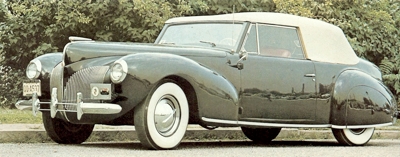 1940 Lincoln Continental Convertible.
1940 Lincoln Continental Convertible.
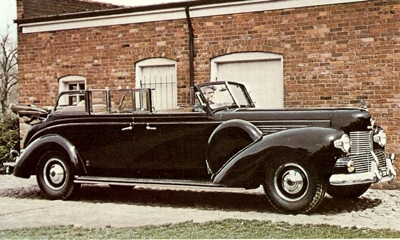 Lincoln Sunshine Special, built for President Roosevelt and based on the Model K. Although the Model K was withdrawn in 1940, this car was updated in 1942.
Lincoln Sunshine Special, built for President Roosevelt and based on the Model K. Although the Model K was withdrawn in 1940, this car was updated in 1942.
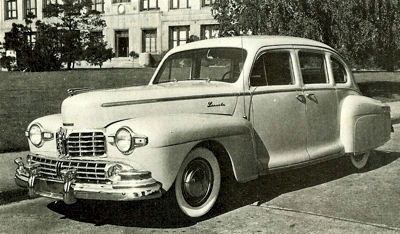 1948 Long Wheelbase Lincoln Continental - one of the last models to use the V12 engine.
1948 Long Wheelbase Lincoln Continental - one of the last models to use the V12 engine.
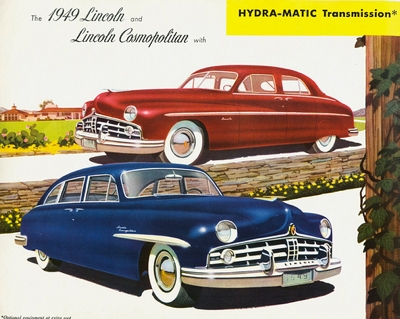 1949 Lincoln and Lincoln Cosmopolitan.
1949 Lincoln and Lincoln Cosmopolitan.
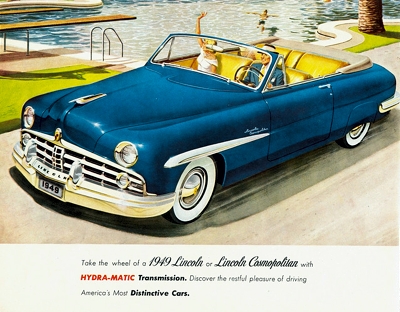 1949 Lincoln and Lincoln Cosmopolitan Convertible.
1949 Lincoln and Lincoln Cosmopolitan Convertible.
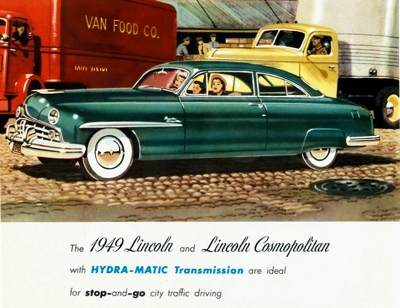 1949 Lincoln and Lincoln Cosmopolitan.
1949 Lincoln and Lincoln Cosmopolitan.
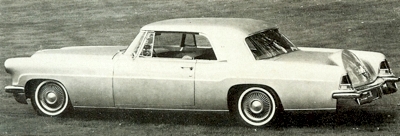 1956 Lincoln Continental Mk II.
1956 Lincoln Continental Mk II.
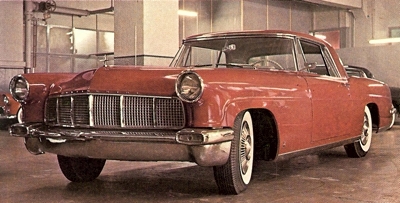 1956 Lincoln Continental Mk II, which was powered by a 6 liter Ford engine.
1956 Lincoln Continental Mk II, which was powered by a 6 liter Ford engine.
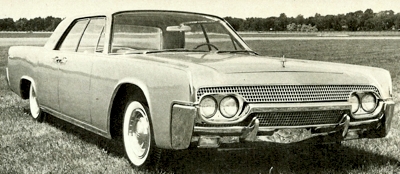 1961 Lincoln Continental - one of the severn best made cars in the world according to Road and Track magazine at the time. Production was restricted to 100 cars per day.
1961 Lincoln Continental - one of the severn best made cars in the world according to Road and Track magazine at the time. Production was restricted to 100 cars per day.
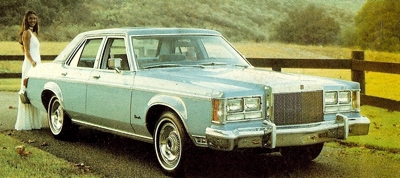 1977 Lincoln Versailles.
1977 Lincoln Versailles.
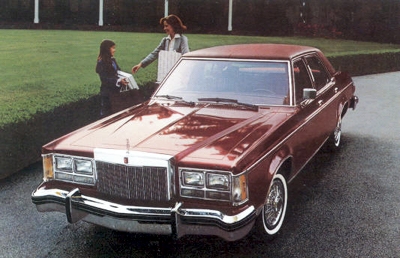 1978 Lincoln Versailles Town Car.
1978 Lincoln Versailles Town Car.
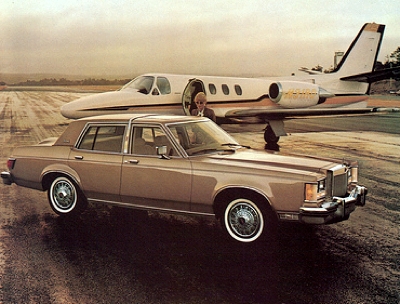 1980 Lincoln Versailles Town Car.
1980 Lincoln Versailles Town Car. |
Dewar Trophy
Their chief engineer, Henry Ford, had just resigned to set up on his own account; he was replaced by Leland, and the result was the Cadillac Automobile Company. Leland brought new standards of precision to car manufacture - and to prove the quality of manufacture he conducted his Dewar Trophy-winning stunt in 1908, when three Cadillac’s were dismantled, scrambled and reassembled from the mingled parts and components taken straight from storage.
A year later Cadillac became part of General Motors; and it was during the war, when Billy Durant refused permission for Cadillac to build the Liberty aero-engine that Henry Leland and his son, Wilfred (who had been Vice-President and General Manager of Cadillac for eight years), resigned and founded the Lincoln Motor Company for this purpose on 29 August 1917. Their sole assets were their technical skill plus a factory site; within two days they had signed a contract for 6000 engines, the first of which was running just seven months later.
Within ten months Lincoln was producing 50 engines a day, with a workforce of 6000. The name Lincoln was chosen as he had been the elder Leland's boyhood hero, and the man for whom he had cast his first vote. And old Henry, like his namesake Mr Ford, was a firm believer in strong principles: he was president of the Detroit Citizens' League, had helped effect several electoral, educational and legal reforms and was convinced that tobacco and alcohol were evils.
He had, at the time of the company's foundation, been President of the Society of Automotive Engineers for a year or so. The end of the war came too early for Leland. Had the hostilities continued another six months, he would have produced sufficient engines to payoff the bank and government loans which had been necessary to put Lincoln into operation. Moreover, as his factory had been purpose-built for the manufacture of aero-engines, he couldn't convert it overnight to carry out his ambition of producing a luxury motor car. That was going to take both time and money.
On 26 January 1920, a new company, the Lincoln Motor Company of Delaware, was formed to produce the car, taking over the old firm's property, business and other assets (plus its indebtedness to the Government, some of which was, however, waived). Leland, with his insistence on absolute precision, had called for the very best machine tools available: and the company, which had attracted $6.5 million worth of investment when it had been launched, had spent it all before the first car was completed the following August. And this wasn't the entire story, as the Lincoln, despite its reputation as the product of Henry Leland's genius, incorporated a pretty high proportion of bought-in assemblies - axles, gears, brakes, chassis, bodies, lighting and ignition.
By September the company had had to borrow another $3.7 million, despite the fact that they already had orders for 1000 cars. There were rumblings of discontent about the way the company was being run. The bodies of the first cars were criticised as lacking style: they were, it seems, designed by Angus Woodbridge, Leland's son-in-law, whose sole qualification as a stylist seems to have been that he was formerly a ladies' milliner. And, more damning still, Archer, the chief inspector, while he had a fine speaking voice and sang in the choir at Leland's church, was said to be incapable of telling a gauge from a washboard, according to Waiter Wagner, who bought machinery and checked tools for the company.
Dr Fred T. Murphy Undermines Lincoln To Snag A Bargain
Chief of the dissidents on the Lincoln board was Dr Fred T. Murphy, a nephew of William H. Murphy, who had been the main backer of the original Cadillac company, and while Leland boasted in September 1920 that 'We've turned the corner-from now on it's forward!', Murphy and his supporters took the opposite view. Certainly sales weren't up to the expected level, but then the US industry, which up to then had been at the euphoric crest of a sales boom, had suddenly collapsed into a unprecedented depression. But even if the styling of the new Lincoln car wasn't to everyone's liking, it was difficult to fault it mechanically. The power unit was a 5.8-liter V8, with the blocks at 68 deg to eliminate periodic vibration, and its cooling system was not only sealed to eliminate evaporation losses but also had thermostatically-controlled radiator shutters, the first significant use of this feature on an American car.
The Lelands, backed by Henry Nash, the company treasurer and G. Hermann Kinnicutt, whose firm, Kissell-Kinnicutt, had put the company stock on the market in 1920, argued that the company was basically sound, and needed only a modest cash injection to ensure profitable operation. But Murphy doggedly insisted that only a comprehensive refinancing programme could save the operation; and the failure of the Lelands, on 6 November 1921, to raise a large loan, gave him the ammunition he needed. In addition, two days later, the company received a larger bill from the Government, chiefly for alleged tax arrears. This, it later transpired, had been issued in error, but the damage had already been done.
Despite the protests of the Lelands and Nash, evidence was produced that the company was running at a loss, due to poor sales, and a receivership was applied for. According to Wilfred Leland, the Government claim had been issued at Murphy's instigation: apparently he wanted the company to fail so that he could acquire control at a bargain price, but the Lelands weren't willing to relinquish their company without a struggle. They announced that they were in opposition to the receivership, that they would attempt to buy and revitalise the company, and that creditors and stockholders would be reimbursed to the tune of $50 a share.
But to do this, they needed financial backing. They could either raise a loan to buy the company when it was offered for sale by the receiver and to keep it running until it was back on a profitable footing, or they could find a buyer who would acquire the company and then allow them complete autonomy to operate it as they chose, and to reimburse creditors and stockholders as the cash became available. Although this was the less desirable choice from their point of view, the Lelands had already begun to make overtures in this direction before the Murphy faction had applied for the receivership.
Clara Ford convinces Henry to help
The man they approached, Henry Ford, had himself suffered a major financial crisis only nine months earlier, but was now back in full production with the Model T and heading for mammoth production records: he, it seemed, commanded the necessary resources, and had shown some interest in Lincoln. When a meeting was arranged, Ford dragged his heels, and the Lelands left without a definite assurance; but after the door of Fair Lane, Ford's luxurious house, had closed behind them, Mrs Clara Ford, who had heard much of the discussion, is reported to have said 'Can't you do something to help them? It's a shame that all Detroit should stand by and see that company wrecked'.
Certainly Ford's 28-year-old son, Edsel, was interested. Ever since the age of ten, Edsel had been fascinated by car styling - a commodity conspicuously lacking in the utilitarian Model T - and longed for an outlet for his definite talents in this direction. Around this time, during a round of golf with a friend, Edsel paused from his game to remark wistfully: 'Father makes the most popular car in the world; I should like to make the best car in the world'. Now, it seems, he might have the opportunity ... With his mother's backing, Edsel discussed the possibility of the Ford Motor Company acquiring Lincoln with the other members of the company top management, and told Henry that they would like to take over Lincoln. 'Tell the Lelands to come out and talk it over', Henry replied
Although in later years the Lelands claimed that Ford had offered to buy their company so that they could run it without interference, and that they could easily have raised the necessary money elsewhere, it seems, on the evidence of Edsel Ford, that they were pretty desperate when they asked for Ford's help, and that they had received no other offers. Whatever the truth of the matter, by December 1921 it was settled that the Fords would provide the money needed to save Lincoln.
The Murphies - if it really was they who had engineered the company's downfall - had faded from the scene, and when Henry Ford's representative bid $8,000,000 for Lincoln at the receivership sale on 4 February, his was the only offer. There was a holiday atmosphere at the Lincoln plant: the Fords and the Lelands had attended the sale together, and when the offer was accepted, the watching crowd formed a line to shake hands with Henry Leland. It looked indeed as though the Lelands had got what they wanted: 'The executive personnel of the two concerns', insisted Henry Ford, 'will be held separate and distinct, the management of the Lincoln company continuing with Henry M. and Wilfred C. Leland'.
The new Lincoln Motor Company, with Edsel Ford as second Vice-President along with Wilfred Leland, was indeed operated as a separate company, even though all its shares were now held by the Ford Motor Company. And, with Edsel's influence, Lincoln became a viable proposition. The old body designs were phased out, and new, more attractive styles introduced. Prices were cut drastically, and orders worth $2 million poured in. However, the Ford staff who now moved into the Lincoln plant to watch production methods and see what could be improved, what could be adapted to the Model T's manufacture, represented an intolerable interference to the Lelands, who resented any suggestions, however well meant or accurate, which would result in changing any of their methods or materials.
Within a few months the situation had deteriorated to the point where reconciliation was impossible, and Wilfred Leland reportedly asked Henry Ford if he and his father could buy the company at the purchase price plus a reasonable rate of interest; no deal. 'Mr Leland,' said Ford, 'I wouldn't sell the Lincoln plant for five hundred million dollars.' By mid June the Leland-Ford alliance was all over, and the two Lelands had been given their marching orders. Now that Edsel had sole command, the quality of the cars improved, certain production processes were rationalised, and limited conveyor-belt assembly introduced.
The standard bodies were styled by Brunn, while custom coachwork was series produced by Le Baron, Willoughby, Judkins, Dietrich and Locke. The cars were built to such accurate limits they required, boasted T. J. Litle, the company's chief engineer, no running in. Their acceleration made them a favorite with both police and gangsters. Indeed, special police models were available from 1924, with four-wheel brakes (the general public didn't get them until 1927), bullet-proof glass windscreens, twin spotlights, shotgun racks and, in some cases, special tuning to bring the maximum speed to more than 80 mph.
Calvin Coolidge owns the first Presidential Lincoln
By 1924 the company was showing a profit, with 7875 cars produced in the 1923-24 season; and the President of the United States, Calvin Coolidge, had become the first such officer to own a Lincoln. All cars were subjected to an intense test programme before leaving the factory, even those carrying coachwork by outside bodybuilders, and the standards of finish were comparable with those of any top quality car in the world. Yet the Lincoln incorporated many Ford ideas, such as the interchange-ability of parts between new and old models, so that the earlier cars could be brought up to date at modest cost.
Exchange engines were available for a mere $100, and servicing was as efficient and as easily available as for the Model T. During 1928 there was an increase in engine size to 6.3 liters; the crankshaft was fitted with counterweights to retain the car's traditional smoothness of running. The next major specification change came in 1931, with a chassis lengthened to give a 145 in wheelbase, and equipped with a freewheel. Eulogised N. W. Ayer & Son, Inc, who handled publicity for this model: 'Low-slung and rakish, this new open sport type is expected to be a familiar sight around country clubs and fashionable beach and mountain resorts during the coming summer'.
Ford Launch Their First V8, Lincoln Their V12
Typical of the standard equipment of the Lincoln range at this time was a cabinet inlaid with pewter, recessed into the back of the front seat. Access to it was provided by a door fitted on each side of a centre panel in which a cigar lighter, tonneau light and switch were fitted. Further engineering innovation came in 1932, the year that the Ford Motor Company introduced the V8. Not to be outdone, Lincoln announced their new KB model-with a V12, hitherto the province of low-production, high-cost cars. It was one of only seven V12 models on the American market that year, the others being produced by Auburn, Cadillac, Franklin, Packard and Pierce-Arrow.
This was the last new Lincoln model to be introduced in the lifetime of the company's founder, Henry M. Leland died a few months later, aged 89. Although the firm had been part of the Ford organisarion for the past decade, there had been no let-up in the standards of accuracy to which the car was built. Indeed, many of the components of the Lincoln KB were machined to an accuracy of between 1/5000 and 1/10,000 inch. But unfortunately sales of the new model and its slightly smaller stable mate, the KA, were disappointing - only 2112 in 1933 - and for 1934 a new Model K was promoted, replacing both KA and KB, and having a swept volume of 414 cu.in., which represented almost exactly the average between the cubic capacities of its two predecessors. A total of 21 different body types was available.
Sales rose marginally, to 2170. The opportunity to own a Lincoln was soon to be placed before a vastly increased sector of the public with the arrival of what Ford Sales Manager William C. Cowling called a 'sensational, completely new motor car'. This was the Lincoln Zephyr, which had a 110 cu in engine (V 12 of course) in a 122 in-wheelbase body of semi-unitary construction and ultra-streamlined appearance. Price tag was only $1275, and the success of the new model was reflected dramatically in the sales figures: in 1936 a total of 18,994 Lincolns was sold, of which a staggering 17,715 were the new Zephyr model.
Edsel Ford's Styling Studio - And The Lincoln Continental
And the following year was even better, despite a recession in the autumn, with total Lincoln Zephyr sales of 25,186. The Zephyr had, however, effectively stifled the more expensive Lincoln Model K, which was finally dropped in 1940, after only 120 cars had been sold in two seasons, including Franklin D. Roosevelt's famous 'Sunshine Special'. Meanwhile, however, a new Lincoln model had made its appearance; this car, the Continental, was destined to become a legend in its own lifetime, and was the direct result of the setting up of a styling studio at Edsel Ford's instigation in the early 1930s.
Heading the studio were John Crawford and Eugene Turenne Gregorie, and in 1932 Gregorie began work designing a sporting car of European type (which Edsel called 'continental'). Several specials were built for Edsel's personal use on Ford chassis, but, despite Gregorie's pleadings, none was adapted for production. The introduction of the Lincoln Zephyr gave Gregorie the opportunity he needed: he suggested that a distinctive car could be produced from the standard body components of the Lincoln Zephyr Convertible Coupe by a little judicious customising.
In November 1938 Gregorie had a 1/10 scale clay model of his proposed design ready to show to Edsel. He had achieved that long, low, 'Continental' look that Edsel so prized by simply cutting a four-inch strip out of the doors and body sides. Edsel's Continental was completed in March 1939, and shipped to his holiday retreat in Florida, where the sleek grey coupe created such a furore of excitement that he resolved to produce it as a 'limited edition'. And in October 1939 the first production Lincoln Continental came off the line. Though it was based on standard Lincoln Zephyr parts, each Continental was virtually hand-built.
The Most Beautiful Car Ever Made
Architect Frank Lloyd Wright called the model the most beautiful car ever made, and three years after production ceased in 1948, the Metropolitan Museum of Art in New York chose it as one of only eight cars selected for their 'excellence as works of art'. Altogether 5322 of the original Lincoln Continentals were produced in the 1940-1942 / 1946-1948 period, 3045 of them coupes and 2277 cabriolets, all with a close resemblance to Eugene Gregorie's original conception, the hallmark-of which was the spare tire vertically mounted at the rear of the car. This, though it had been a commonplace in the 1920s, had fallen out of fashion by the late 1930s. So it was inevitable that when it was revived for Edsel's dream car that this tire placement should be for ever after christened 'Continental'.
As for the Lincoln Zephyr itself, having reached its sales peak in 1937, it went into a gentle decline; and it was quietly resolved that, when production ceased in 1942 so that the company could concentrate on its war work, the Zephyr would not reappear. Meanwhile, Edsel Ford had died, in 1943, aged only 49. For some years his relationship with his father had been clouded by the hold that a strange semi-underworld figure, Harry Bennet, had over Henry.
The Influence of Harry Bennet and death of Edsel Ford
Retained originally to protect Henry Ford's grandchildren against kidnapping, Bennet had become Ford's head of security, often acting as a mouthpiece for the old man. A former prize-fighter, Bennett kept tiger cubs in his office, where he also practised sharpshooting, knocking the points off pencils with an air pistol. Bennett had ambitions to become the head of Ford Motor Company, and was therefore opposed to Edsel. Thanks to Bennett, Henry had become antagonistic towards his son and the situation was ruining Edsel's health. He had always been prone to stomach ulcers; now these had developed into cancer, and, in addition, he had contracted undulant fever from drinking unpasteurised milk from the Ford farm.
On 26 May 1943, at 1.10 am, Edsel died. Deprived of the guiding influence of this man bursting with natural talent for styling, the first post-war Lincolns were little more than upmarket versions of the contemporary Ford range (excepting of course the Continental). In 1948 Benson, Edsel Ford's second son, took control of the Lincoln-Mercury Division, which produced the first new post-war Ford models, the Lincoln and the Lincoln Cosmopolitan, which had independent front suspension. Then, in 1950, came news that the company was considering the reintroduction of a Continental model.
On 1st July, 1952, a separate division of Lincoln-Mercury was formed to handle the new Continental, headed by William Clay Ford, youngest of the three Ford brothers, who had inherited his father's taste for styling. By June 1953, the first model of the new Continental was shown to Ford's executive committee, and in 1954 a special plant was inaugurated for its production. The Mark II Continental made its debut late in 1954. Designed by John Reinart, it had little in common with its illustrious ancestor other than the spare wheel mounting. It was advertised as being a '$10,000 car', though the price tag was in reality lower than this.
One of the World's Seven Best-Made Cars
Just 3012 were built before production ceased in 1957: Lincoln Continentals were built to this design for another couple of years, designated Mks- III and IV, but they had lost that traditional exclusivity, and no-one objected to the introduction of a new Lincoln Continental in 1961. Square-cut and low-slung, the 1961 Continental was voted one of the world's seven best-made cars by Road and Track magazine: each car built - and production was restricted to less than 100 cars a day - underwent comprehensive testing, including a 12-mile road run.
The range included what was claimed to be the world's only four-door convertible. A special bullet-proof Presidential limousine with a host of complex equipment, including separate heating and air conditioning for chauffeur and passengers and twin two-way communications systems plus a retractable platform for the security guards, was built in 1968 at a cost of half a million dollars. A complete restyling took place in 1970, with the cars acquiring a more pronounced kick-up over the rear wheels and squarer wheel arches, following Lincoln's policy of never making change simply for change's sake.
Standard equipment on the 1974 Lincoln Continental included automatic temperature control - 'you simply select the desired climate ... it is then maintained constantly' - power windows, six-way power front seats, power front disc brakes, power steering, a Cartier clock, radio with four loudspeakers and lights for every compartment, even the ashtrays. There was also the Lincoln Continental Mk IV, described as 'one of the most desirable and most wanted personal American luxury cars of this decade ... a car whose classically beautiful simplicity will challenge the years'. Even more lavishly equipped than the standard Continentals, the Mk IV came in three incarnations, topped by the Continental Mk IV with 'Gold Luxury Option ... the ultimate gesture in luxury ... America's consummate luxury.car'.
Exterior finish was 'prized Unique Gold Diamond Fire', with a roof covered in 'Gold Flare Levant grain vinyl'. And there was the option of the Moonroof, a power-operated sunshine roof of gold-tinted one-way glass. For 1975, there were new options, including disc-brakes all round and coachlamps. Standard, of course, was the Continental spare wheel position, though the wheel now rode in burglar-proof luxury inside the cut-pile carpeted boot. The Continental would remain Lincoln's flagship model until 1981, when the Town Car, previously the Continental's top trim level, became its own model and took over that role. In 1998 Lincoln was the best-selling luxury brand in the United States, helped by the massive success of the Navigator SUV, and a redesign of the Town Car as well as the Continental. Lincoln was one of the Premier Automotive Group brands from 1998 to 2002, but was pulled out due to Ford's new marketing strategy of separating its import brands from its domestic marques.
In recent years the company had fallen behind Japanese, European, and American competitors for a lack of new models. The company has reacted to remedy this, however, by sharing parts and platforms with other Ford divisions worldwide in an attempt to bring more new models to market faster. The result is the introduction of several new models, starting with the 2006 Mark LT pickup (later replaced by the Platinum trim version of the Ford F-150), Zephyr (upgraded and renamed Lincoln MKZ for the 2007 model year) and the MKX Crossover SUV. Subsequent model launches were the MKS sedan in 2009 and the MKT "Touring" crossover for the 2010 model year. Lincoln vehicles are currently officially available in the United States, Canada, Mexico, Puerto Rico, U.S. Virgin Islands, Guam, American Samoa, Northern Mariana Islands, South Korea, and the Middle East. Lincoln competes with other luxury brands, mainly Cadillac of Ford's American arch rival General Motors, but also to a lesser extent with brands such as Lexus of Toyota, Infiniti of Nissan, Acura of Honda, and Audi of Volkswagen.
Also see: Lincoln Car Reviews 